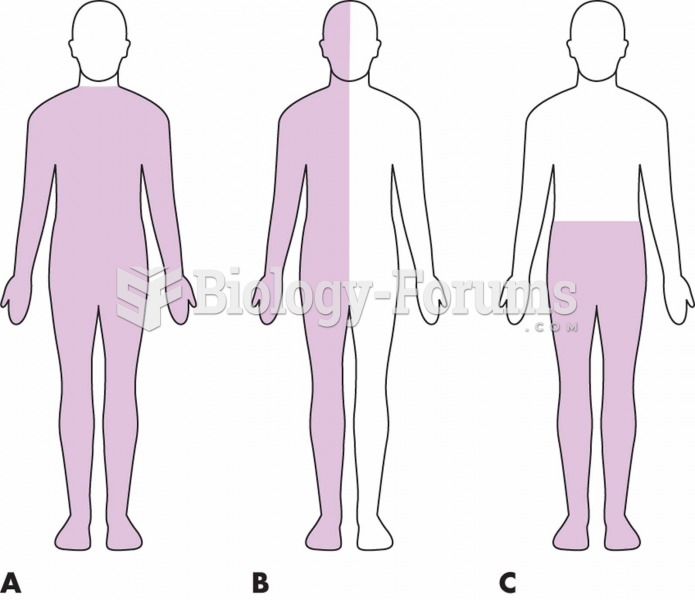|
|
|
Did you know?
According to the CDC, approximately 31.7% of the U.S. population has high low-density lipoprotein (LDL) or "bad cholesterol" levels.
Did you know?
Atropine was named after the Greek goddess Atropos, the oldest and ugliest of the three sisters known as the Fates, who controlled the destiny of men.
Did you know?
There are approximately 3 million unintended pregnancies in the United States each year.
Did you know?
The longest a person has survived after a heart transplant is 24 years.
Did you know?
There are more bacteria in your mouth than there are people in the world.






